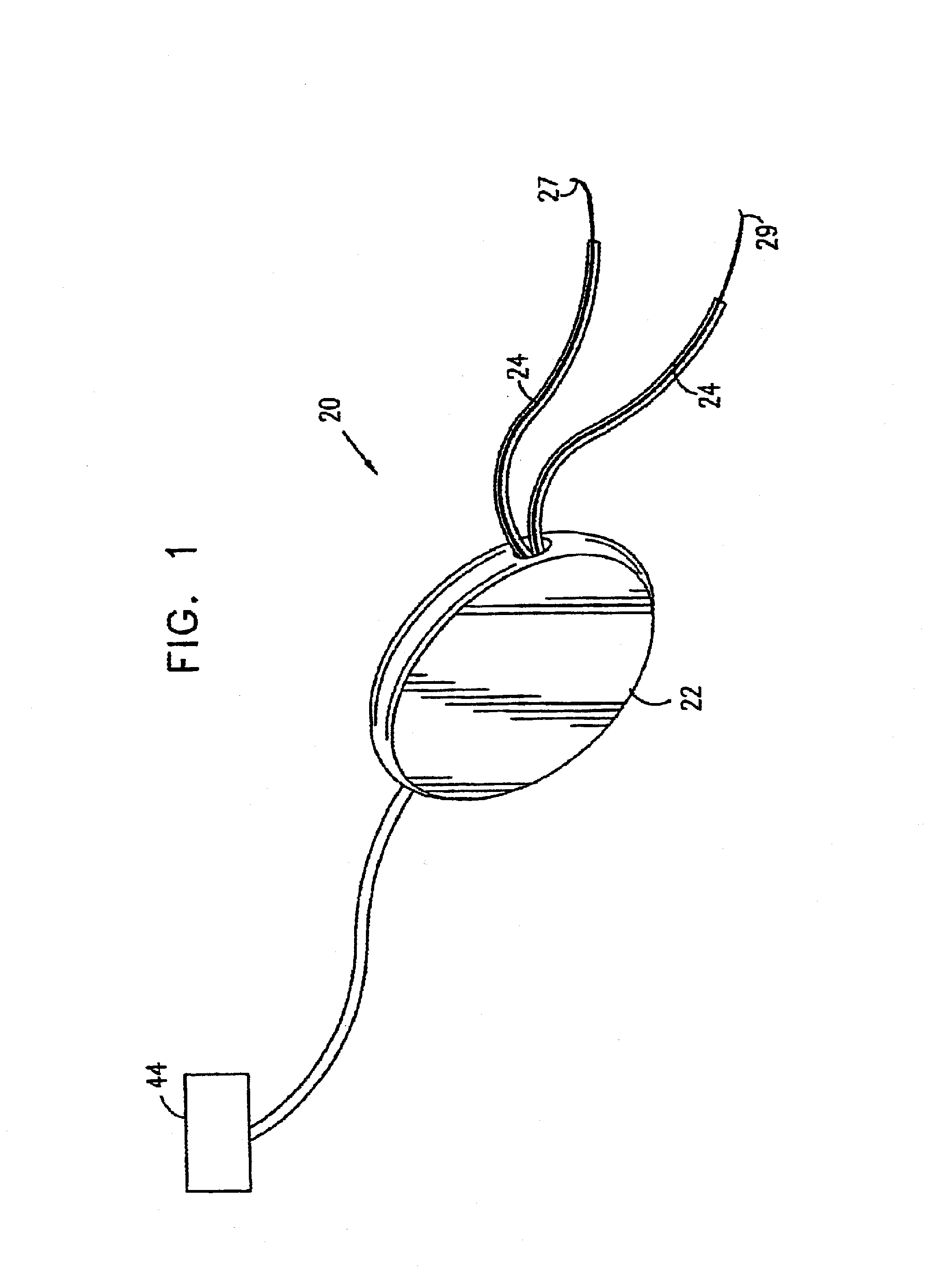Pelvic disorder treatment
a technology for pelvis disorders and electrical devices, applied in the field of medical electronic devices, can solve problems such as discomfort and embarrassment, insufficient absorbency of products, and inability to effectively treat pelvis disorders
- Summary
- Abstract
- Description
- Claims
- Application Information
AI Technical Summary
Benefits of technology
Problems solved by technology
Method used
Image
Examples
Embodiment Construction
I. Overview of Preferred Embodiments
[0124]A. General Description of Stimulator Device
[0125]Various aspects of the present invention are described in this section (I) and in greater detail in the following section (II). As described with reference to the preferred embodiment shown in FIG. 1, an electronic stimulator device is preferably implanted in the genital region of a patient and stimulates one or more of the muscles or nerves in the region, so as to control and treat urinary incontinence, typically urge incontinence. Preferably, imminent urge incontinence generates an electromyographic (EMG) signal in the muscles, which is sensed by one or more electrodes and is analyzed by a control unit of the device. Alternatively or additionally, non-electromyographic signals are received and analyzed by the control unit. When the control unit determines that the signals are indicative of a condition, such as an increase in abdominal or intravesical pressure that is likely to cause involunt...
PUM
 Login to View More
Login to View More Abstract
Description
Claims
Application Information
 Login to View More
Login to View More - R&D
- Intellectual Property
- Life Sciences
- Materials
- Tech Scout
- Unparalleled Data Quality
- Higher Quality Content
- 60% Fewer Hallucinations
Browse by: Latest US Patents, China's latest patents, Technical Efficacy Thesaurus, Application Domain, Technology Topic, Popular Technical Reports.
© 2025 PatSnap. All rights reserved.Legal|Privacy policy|Modern Slavery Act Transparency Statement|Sitemap|About US| Contact US: help@patsnap.com



